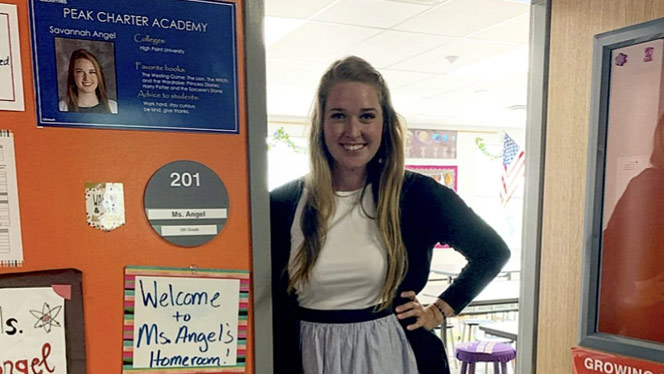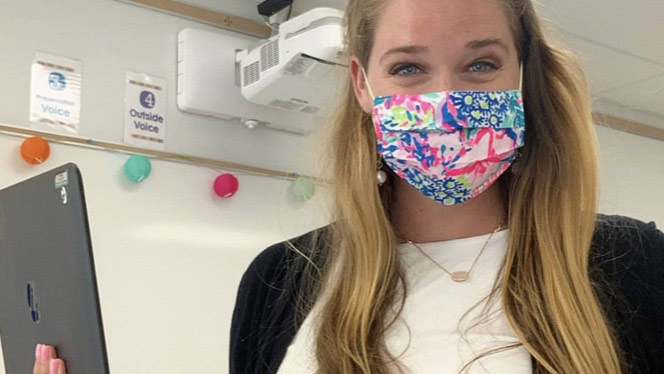9 Tips for Teaching with a Type B Personality
Savannah AngelSavannah Angel
Articles by Savannah
I have a Type B personality. I’m very “go with the flow,” I don’t have to have a rigid plan, and everything doesn’t have to be just so. But as a teacher, I’ve gained Type A tendencies that keep me afloat. The following tips are things that have helped me as a Type B personality teacher.
I teach middle school science, which requires structure. As a Type B person, I focus on frontloading. I let my students know what’s happening before we start the day so they know what to expect. They know the plan; they have an agenda. Some kids thrive on having beautiful planners with 18 different markers, stickers, and scented highlighters. Other kids have no idea what class they’re in. It’s just about getting them on the same page, so everyone knows what’s going on.
You have to find strategies that work for you. You can’t do a personality flip, because if you’re not teaching as yourself, that’s no fun.
I have set days for when I’m going to stay at work to grade papers and other days where I can just go home and relax. I do better with that kind of structure, so I try to bring this to my classroom. If I don’t plan or at least have an outline, there’s just more and more stress. It’s trial and error for everyone, so you have to find what works for you. Some people can grade papers at home and drink their tea, wear their slippers, watch “The Office,” and get it all done without a problem. But that’s not how I function. My brain can’t work like that.
I bring my weird, goofy, hot mess of a self into the classroom and kids connect to that because they’re a hot mess. We both don’t have great attention spans, and that’s what works. I know what it’s like for them, and I know how to connect with that. I have directions on the board, on a handout, or on a neon yellow laminated sheet labeled with a neon sticker. I make it so you can’t miss it. That’s what they need. Sometimes I make them tell the person beside them what I just said. It’s repetitive, yes, but it’s also necessary. We don’t want those Type B friends floating off in space.
I also use guided notes so students can keep up with filling in the blanks instead of trying to write down every word I say. This allows them to pay more attention to me explaining the new concepts instead of their panicked scribbles or wasting time on writing. It helps the kids who want all the notes and the little diagrams and everything, but it also works for the kids who just want to fill in the blanks. I have all the notes online for kids who weren’t in class or lost their notes in the backpack abyss. Everything is on my class website – rubrics, notes, slides, all of it. It supports all types of learners and allows parents to support their scholars at home by holding them accountable.
The advice I’d give myself as a new teacher is to reach out to the veterans or teachers who have been teaching for a few years. Just use trial and error to find out what personality you are and what works for you. You need to be ready for all types of kids, so it’s helpful to me to be around teachers who are super Type A. They think about a lot of things I don’t think about, and they inspire me to do things to support my kids that I wouldn’t have thought of on my own. Collaborating with other teachers is the best way to become a great teacher yourself.
It is important to surround yourself with people you aspire to be like and that inspire you. You don’t have to be the perfect Pinterest teacher, but you can be the teacher that your kids need.


- Differentiate what can be “go with the flow” and what can’t.
I teach middle school science, which requires structure. As a Type B person, I focus on frontloading. I let my students know what’s happening before we start the day so they know what to expect. They know the plan; they have an agenda. Some kids thrive on having beautiful planners with 18 different markers, stickers, and scented highlighters. Other kids have no idea what class they’re in. It’s just about getting them on the same page, so everyone knows what’s going on.
- Find the advantages.
- Get to know yourself and be yourself.
You have to find strategies that work for you. You can’t do a personality flip, because if you’re not teaching as yourself, that’s no fun.
- Learn your boundaries.
- Make your tendencies work for you.
- Learn time management.
I have set days for when I’m going to stay at work to grade papers and other days where I can just go home and relax. I do better with that kind of structure, so I try to bring this to my classroom. If I don’t plan or at least have an outline, there’s just more and more stress. It’s trial and error for everyone, so you have to find what works for you. Some people can grade papers at home and drink their tea, wear their slippers, watch “The Office,” and get it all done without a problem. But that’s not how I function. My brain can’t work like that.
- Learn organization.
- Give your students what they need.
I bring my weird, goofy, hot mess of a self into the classroom and kids connect to that because they’re a hot mess. We both don’t have great attention spans, and that’s what works. I know what it’s like for them, and I know how to connect with that. I have directions on the board, on a handout, or on a neon yellow laminated sheet labeled with a neon sticker. I make it so you can’t miss it. That’s what they need. Sometimes I make them tell the person beside them what I just said. It’s repetitive, yes, but it’s also necessary. We don’t want those Type B friends floating off in space.
I also use guided notes so students can keep up with filling in the blanks instead of trying to write down every word I say. This allows them to pay more attention to me explaining the new concepts instead of their panicked scribbles or wasting time on writing. It helps the kids who want all the notes and the little diagrams and everything, but it also works for the kids who just want to fill in the blanks. I have all the notes online for kids who weren’t in class or lost their notes in the backpack abyss. Everything is on my class website – rubrics, notes, slides, all of it. It supports all types of learners and allows parents to support their scholars at home by holding them accountable.
- Learn from other teachers.
The advice I’d give myself as a new teacher is to reach out to the veterans or teachers who have been teaching for a few years. Just use trial and error to find out what personality you are and what works for you. You need to be ready for all types of kids, so it’s helpful to me to be around teachers who are super Type A. They think about a lot of things I don’t think about, and they inspire me to do things to support my kids that I wouldn’t have thought of on my own. Collaborating with other teachers is the best way to become a great teacher yourself.
It is important to surround yourself with people you aspire to be like and that inspire you. You don’t have to be the perfect Pinterest teacher, but you can be the teacher that your kids need.


